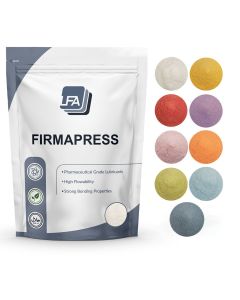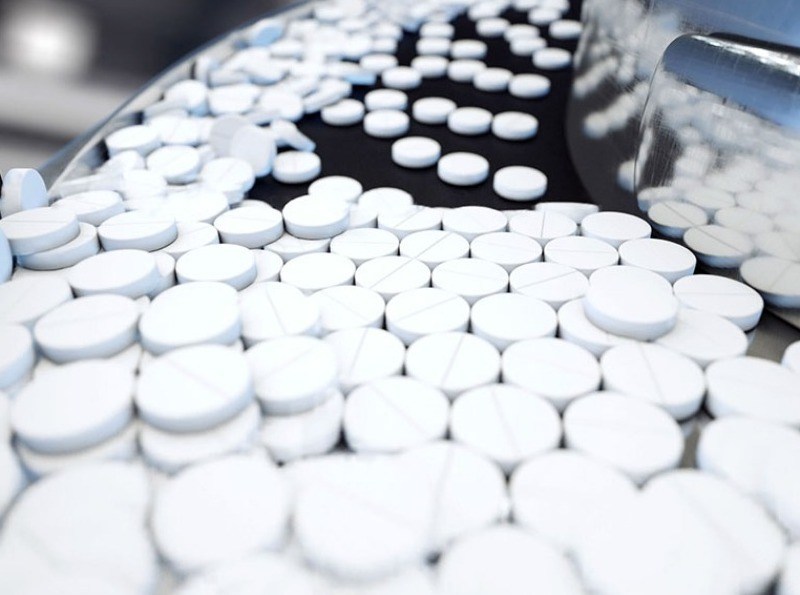Description: The term “Binding” is used when the tablet sticks to, takes hold or splits during the molding / pressing process.
Common Problems in Tablet Compression
In the tablet manufacturing industry, the most common problem that they encounter is what one would call as “Sticking”. This happens when the granulation sticks to the tool face, which results to sticky products and failure of the presses to compress the tablets. This is a big problem for manufacturers as the sticking goes unnoticed and only seen once the item is in production.
Manufacturers can avoid this problem. During the production level, sticking can affect the efficiency of the production, which causes money for the company. Not only that, but it can also affect the quality of the tablet and the perception of the consumer of the product.
To solve this dilemma, some companies use punch coating as many claim that it helps prevent sticking by enhancing the product release features of the press. Punch coating, in general, is expensive and in fact less than effective. Another problem with punch coating is that it adds a foreign variable to the equipment, which is difficult to check, and troubleshooting it later on can be an added problem.
Before deciding on the coating process, it is important to check other options available including choosing a different steel grade as this can improve the release of the product. Choosing a high quality steel grade such those that have high chromium will help and easier to troubleshoot should a problem arise.
Consistent
One of the most important things to consider when it comes to the success of any production is the consistent maintenance of the presses. Failure to maintain the equipment regularly would result to inconsistencies on the tablet’s quality resulting to varying features of the tablet such as its weight and hardness. Inconsistent working length also affects the product as it also results to deviations on the tablet’s thickness.
Improper fill cams can also result to problems as “fill cams” that are too deep would result to excess granulation filling the die. This would then affect the weight of the tablet and if the feeder fails to claim the excess, it would accumulate on the turret neck area. The force of the spinning turret would then move the excess granulation to the dies resulting to different weights for each tablet produced.
Maintaining the production flow is also important as this affects the uniformity of the tablet compressed. An even flow of granulation would result to high quality tablets.
Zapisz się do naszego newslettera
Speed
The
In the future, innovation in the industry would ensure faster production of tablets. Frank Stokes was credited for the rotary tablet press design and this has still been used as to date. The first rotary was able to produce 400 to 600 tablets per minutes whereas today, modern presses can produce 100,000 tablets in one minute.
Granulation
To ensure success, it is necessary to make sure that proper granulation is observed for overall tablet quality. Improper granulation would result to sticking, friability, poor hardness as well as picking. Aside from this, excessive fines may form resulting to tool binding, excessive tool and press wear, scorching and discoloration. This is a common issue nowadays especially as manufacturers prefer the dry direct compression blend.
Another problem that one may encounter is
Innovation in Technology
In the past few years, advancement in the technology resulted to new and innovative tools most significant of which is the Fette die segment and the Courtoy die ring/shell. Fette created a turret configuration which eliminates the usage of traditional die and die locks used to help the die secure in the table. The die segment is beneficial in that it increases the station in a given turret area thus increasing the number of tablets that are produced per revolution. Another is that it lowers the set up time by removing the time required to set a die in position. Instead of maintaining each die separately, the die segment would only require two bolts to hold it in place.
The Courtoy ring is also different from other die ring in that it allows the use of standard die and at the same time makes use of die shells that are held in position without the use of any locks. The system makes use of single replaceable die, which replaces the use of traditional die table. The turret’s upper and lower sections can be separated to allow the die ring to be replaced. One should take note that in increasing the number of station in a given turret, one would be able to increase the number of tablets being produced and the use of the die ring would decrease the setup time for presses.
Sizes of Tooling
There are different configurations as well as sizes for tooling, each with its own benefits. The most common configuration is the B and D which are available in the US and European cam format. The B is smaller than the D type, which is the more common of the two and usually preferred by pharmaceutical companies. The different configuration is determined by the max available tonnage and the speed of the tablet press.
Compression tooling is also available in different materials. The use of steel depends on the compatibility of the material with the product. High chromium steel is often used compared with standard steel as it increases efficiency during output, though it has the tendency to cause tablet brittleness which can be a problem for some tablet shapes or granulation process.
Most materials however are compatible with the
The
Micro Tab Punches
The micro tab is another exceptional tool configuration that helps reduce distortion of the tip, which commonly happens to the lower punch. The configuration is useful for tablets that are under 4mm in diameter or smaller but requires strong compression force. In order to gain strength, the micro tab tool shortens the upper and lower punch tips making the tips of the punch much tougher. To shorten the lower punch tip, a distinct cut is made at the die’s bottom in order to be able to accept the punch barrel portion. This would ensure a proper tip portion for ejection of tablets.
Maintenance
Cleaning and proper maintenance is difficult and many manufacturers experience high cost for water utility due to the fact that proper temperature is needed to prevent spotting or corrosion of the surface area of the tooling. Using the proper cleaning materials is also important especially ones specifically made for carbon tool steels. The use of hot water enables faster drying and prevents the possibility of discoloration of the surface area.
What is Tablet Land?
A “tablet land” happens when a small flat ridge appears around the tablet surface. Although this can be confused with flashing problems, it happens when the tablet passes through a
Conclusion
In order to promote consistent production and high quality tablets, there are certain conditions that should be taken into consideration. That said, tablet compression is then considered as an art rather than science.





